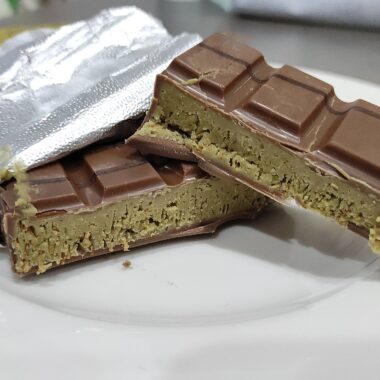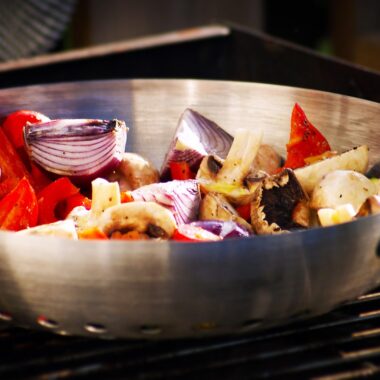Kitchen twine, also known as butcher’s twine, is a versatile tool in the kitchen, commonly used for tying up roasts, securing stuffed meats, or trussing poultry. But what happens when you run out or don’t have any on hand? Fortunately, there are several alternatives to kitchen twine that you can use in a pinch. Here are some options:
Dental Floss
Best for: Trussing poultry, tying small roasts, and securing stuffed meats.
Make sure to use unflavored and unwaxed dental floss to avoid any unwanted flavors or residues. Dental floss is strong, food-safe, and easy to manipulate, making it an excellent substitute for kitchen twine.
Silicone Baking Bands
Best for: Tying roasts and securing stuffed meats.
Silicone baking bands are heat-resistant, reusable, and dishwasher safe. These stretchy bands can withstand high oven temperatures and can be used to hold foods together in place of twine.
Aluminum Foil
Best for: Wrapping and securing large items like roasts or whole poultry.
You can twist aluminum foil into a sturdy rope-like shape to tie around food items. While it’s not as flexible as twine, it can still provide a secure hold for cooking purposes.
Butcher’s Paper or Parchment Paper
Best for: Wrapping meats, fish, and other food items for baking or grilling.
By folding and twisting butcher’s paper or parchment paper, you can create a makeshift tie. This method works well for items that need to be wrapped or bundled for cooking.
Skewers or Toothpicks
Best for: Securing stuffed meats, closing up rolled foods, and holding food together while cooking.
Wooden or metal skewers and toothpicks can be used to pin food items in place. Be sure to soak wooden skewers in water before using them in the oven or on the grill to prevent burning.
Strips of Leeks or Green Onions
Best for: Tying smaller items like bundles of herbs or securing small pieces of meat.
Leeks and green onions have long, flexible leaves that can be used to tie food together. This option is particularly useful for adding a subtle flavor to your dish while securing it.
Cheesecloth
Best for: Wrapping herbs, spices, and smaller items for easy removal after cooking.
Cheesecloth can be cut into strips and used to tie up various food items. It’s especially handy for creating herb bouquets (bouquet garni) or tying up spices in a pot.
Cotton Yarn
Best for: Trussing poultry and tying roasts.
If you have cotton yarn on hand, it can be used as a substitute for kitchen twine. Ensure the yarn is 100% cotton and not dyed, as you don’t want any chemicals or dyes leaching into your food.
Tips for Using Twine Substitutes
Safety First: Ensure that any material you use is food-safe and can withstand the cooking method you plan to use (oven, grill, etc.).
Remove Before Serving: Remember to remove any substitutes, like foil or skewers, before serving your dish to avoid any choking hazards or accidents.
Check for Flavors: Avoid using materials that might impart unwanted flavors to your food, like waxed or flavored dental floss.
Having these alternatives on hand can save the day when you’re in the middle of preparing a meal and realize you’re out of kitchen twine. Each substitute offers unique benefits and can be chosen based on the specific needs of your recipe.
Twist Ties
Best for: Securing small bundles of herbs or vegetables.
Twist ties, commonly used for sealing plastic bags, can be a quick fix for tying small food items. Make sure to use food-safe twist ties without any plastic coating that could melt during cooking.
Cotton Thread or Embroidery Floss
Best for: Tying small roasts and trussing poultry.
Cotton thread or embroidery floss can be a suitable substitute for kitchen twine, provided it is undyed and made from 100% cotton. It’s thin but strong enough to secure smaller food items.
Twine from Produce Bags
Best for: Wrapping vegetables or herbs.
The twine that often comes with produce bags (like those used for onions or garlic) can be repurposed for kitchen use. Ensure it is clean and free from any residue before using it to tie food items.
Wire Bread Ties
Best for: Securing small items or sealing bags for sous-vide cooking.
Wire bread ties, similar to twist ties, can be used to secure food items. Be cautious with these as the metal inside can heat up quickly. They are best used for low-temperature cooking methods like sous-vide.
Unbleached Muslin Cloth
Best for: Wrapping meats and herbs.
Unbleached muslin cloth, cut into strips, can be used similarly to cheesecloth. It’s food-safe and can be tied securely around various food items.
Natural Fiber Strings
Best for: Tying roasts and poultry.
If you have natural fiber strings, such as jute or hemp, they can be used as long as they are untreated and free from chemicals. These strings are strong and can provide a secure hold for larger items.
Tips for Using Non-Traditional Tying Materials
Clean and Sanitize: Ensure that any substitute material is clean and free from contaminants before using it to tie food.
Test for Strength: Before relying on an alternative, test its strength and flexibility to ensure it can hold your food securely during cooking.
Monitor Cooking: Keep an eye on your food while it cooks, especially if you’re using materials that might not be as heat-resistant as kitchen twine.
Creative Uses for Twine Substitutes in Different Dishes
Roast Chicken: Use dental floss or cotton thread to truss the chicken, ensuring even cooking and a beautiful presentation.
Stuffed Pork Loin: Secure the stuffed pork loin with silicone baking bands or unbleached muslin strips to keep the filling intact.
Herb Bundles: Wrap herb bundles with strips of leek or green onion for easy removal after simmering in soups and stews.
Grilled Fish: Use banana leaves or corn husks to wrap and secure fish for grilling, infusing it with a subtle, natural flavor.
Vegetable Bundles: Tie bundles of asparagus or green beans with strips of bacon for added flavor and a visually appealing dish.
Kitchen twine is a useful tool, but it’s not the only option available when it comes to tying and securing food items. With a bit of ingenuity, you can find numerous substitutes already present in your kitchen. From dental floss to natural fiber strings, these alternatives can help you achieve the same results as kitchen twine without compromising on safety or flavor.
By understanding the properties of these substitutes and how they can be best utilized, you’ll be prepared to tackle any culinary task, even when you’re out of traditional kitchen twine. Happy cooking and experimenting with these versatile and creative alternatives!


















